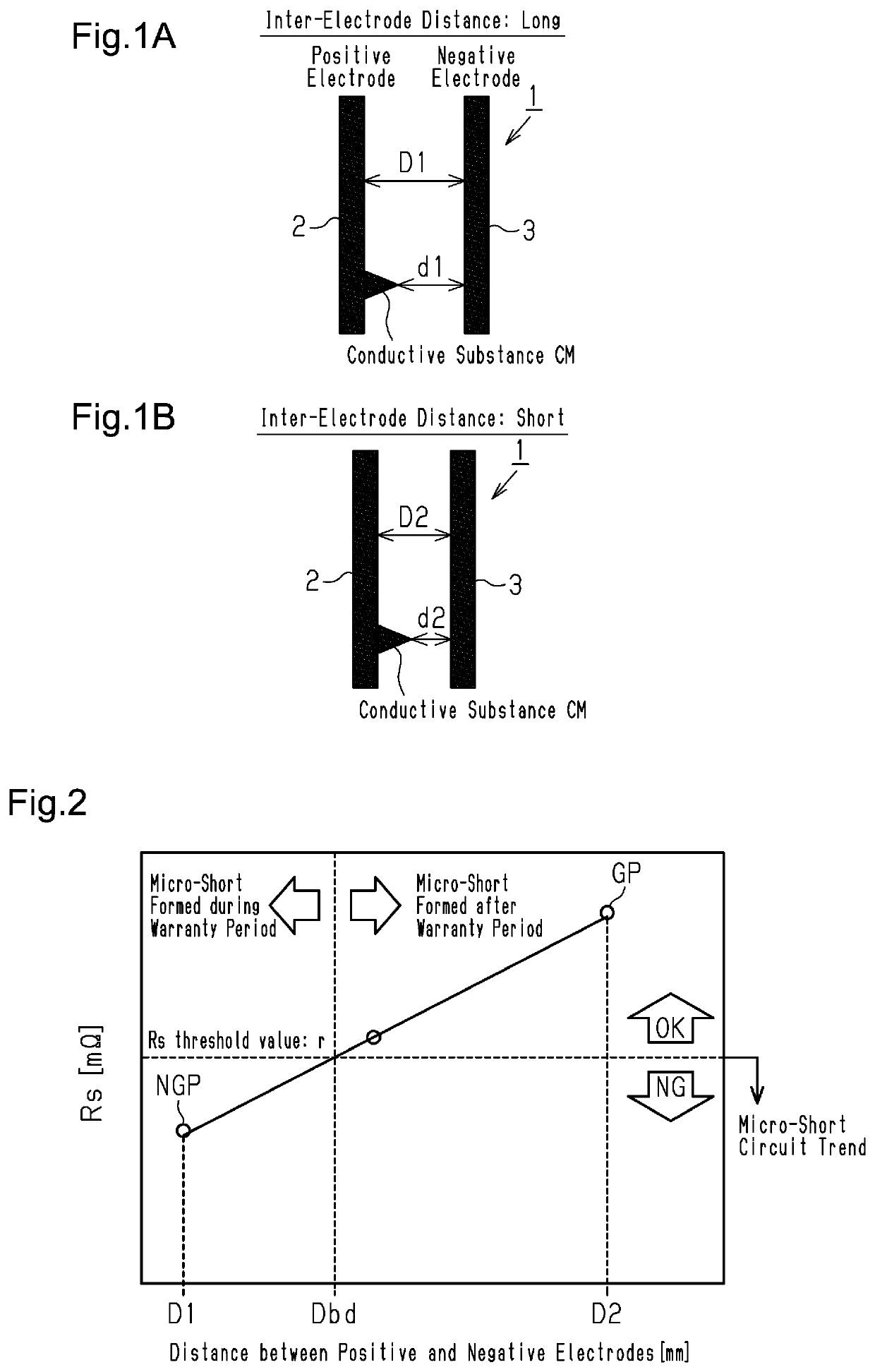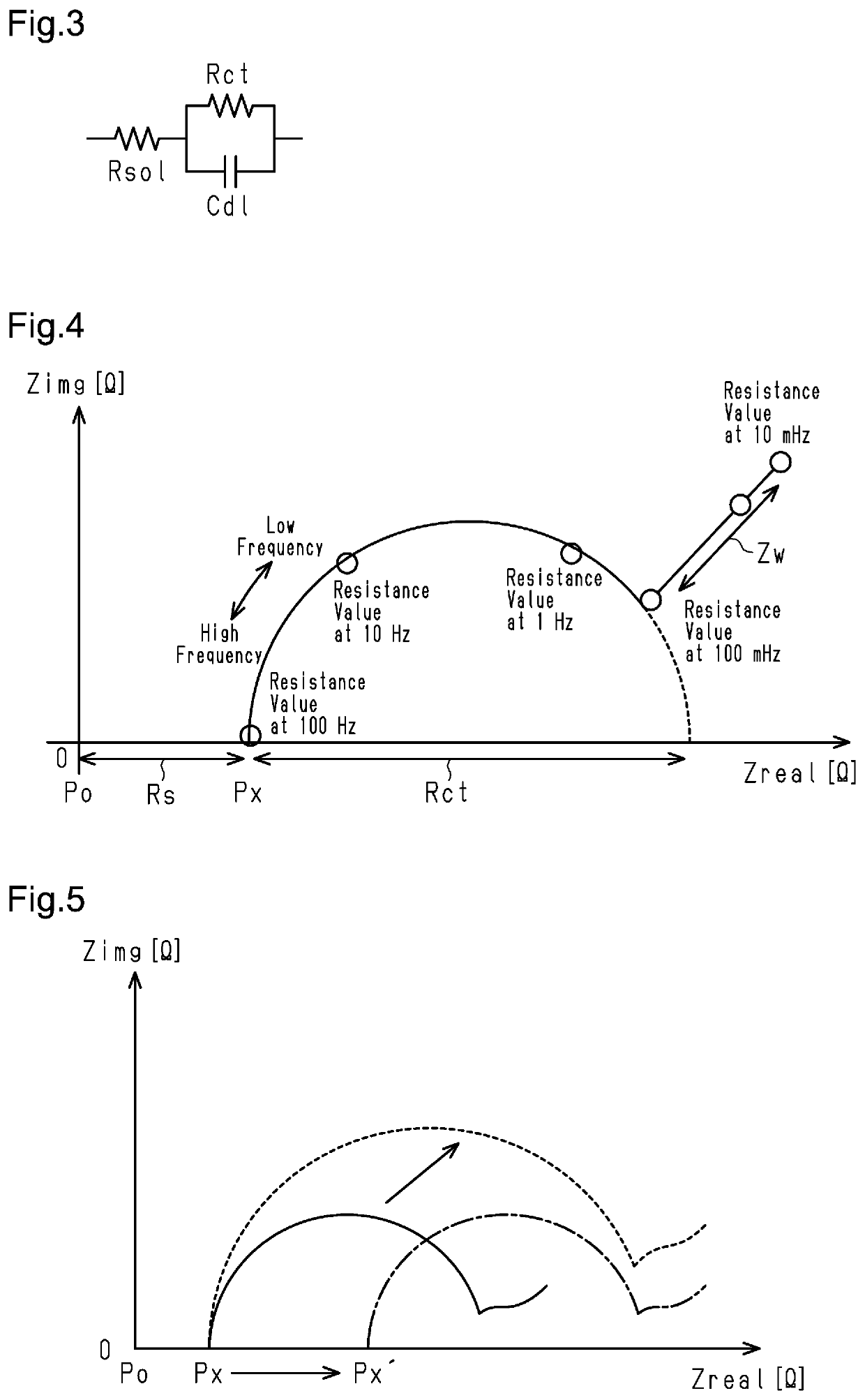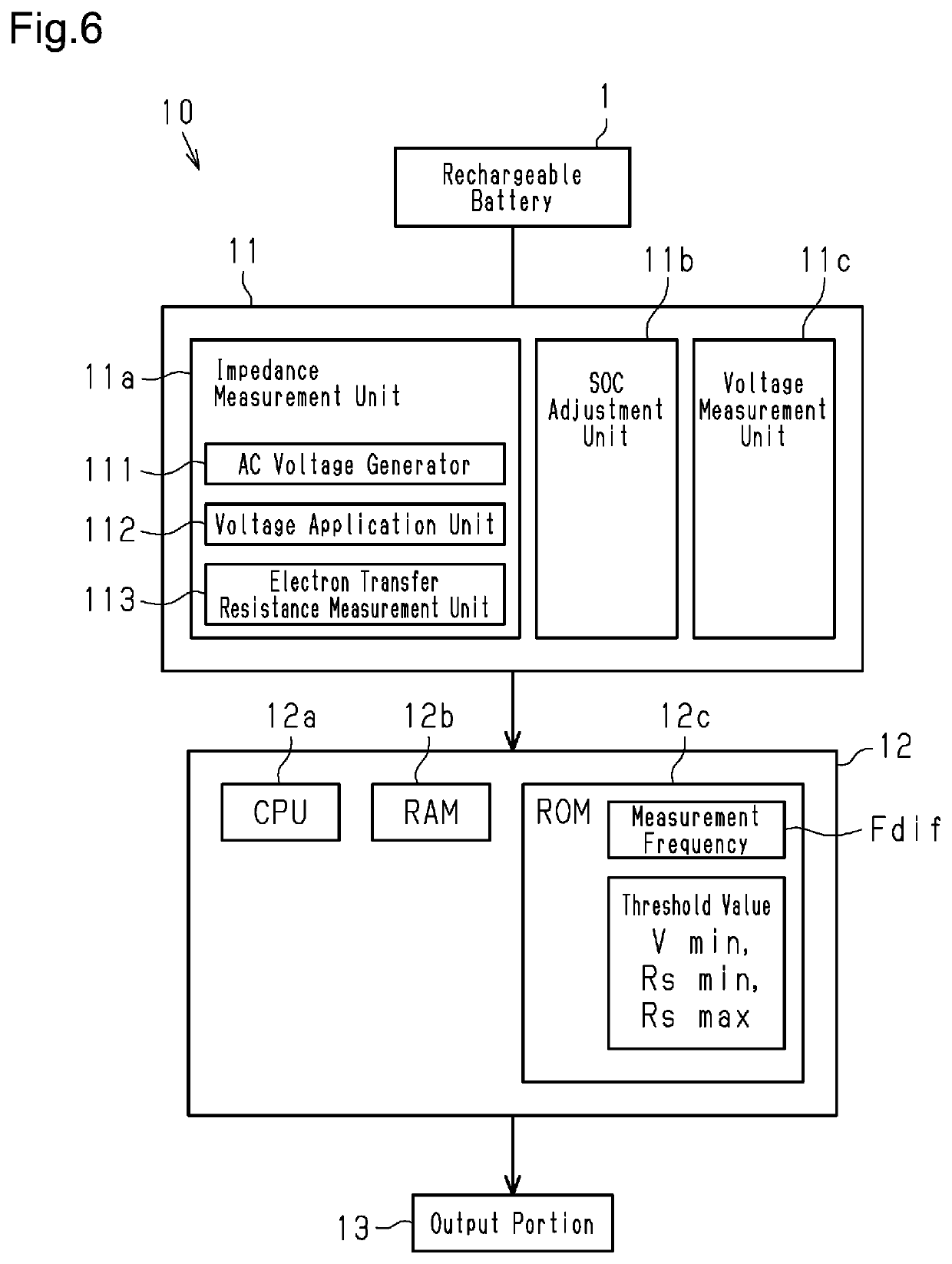Method and device for determining state of rechargeable battery
a rechargeable battery and state determination technology, applied in the direction of batteries, cell components, instruments, etc., can solve the problems of micro-short circuit detection by linking an increase in resistance caused, battery modules in the assembled battery deteriorate at different progress rates, and the assembled battery does not demonstrate a specified performance as a whole. achieve the effect of higher accuracy
- Summary
- Abstract
- Description
- Claims
- Application Information
AI Technical Summary
Benefits of technology
Problems solved by technology
Method used
Image
Examples
first embodiment
Overview of Embodiment
[0035]In the present embodiment, a method for determining a state of a rechargeable battery 1 and a rechargeable battery state determining device 10 use a technique that estimates an inter-electrode distance D between a positive electrode and a negative electrode to detect a rechargeable battery 1 that is likely to form a micro-short circuit in a short time after shipment.
[0036]The rechargeable battery 1 is, for example, a lithium-ion rechargeable battery or a nickel-metal hydride rechargeable battery. In the present embodiment, an on-board lithium-ion rechargeable battery will be described as an example.
[0037]FIG. 1A is a schematic diagram showing an inter-electrode distance D1 between a positive electrode 2 and a negative electrode 3 of a rechargeable battery 1 that is a conforming piece GP. FIG. 1B is a schematic diagram showing an inter-electrode distance D2 between a positive electrode 2 and a negative electrode 3 of a rechargeable battery 1 that is a non-...
second embodiment
Effect of Second Embodiment
[0093](4) The rechargeable battery state determining device has a simple configuration and thus is mountable on a vehicle. The state of a rechargeable battery that is on-board is determined even while the vehicle is in operation.
modified examples
[0094]The embodiments may be modified as follows.
[0095]In the embodiments, the flowchart of the process for determining the state of the rechargeable battery 1 shown in FIG. 7 is an example. The order and contents are not limited to those described in the embodiments. Unless specifically described, the flowchart shown in FIG. 7 may be executed in a similar or different order and may include an additional or alternative step. In an example, in the flowchart shown in FIG. 7, the self-discharge determination, the electrolytic solution determination, and the inter-electrode distance determination may be executed in a different order, and one of the self-discharge determination, the electrolytic solution determination, and the inter-electrode distance determination may be omitted.
PUM
| Property | Measurement | Unit |
|---|---|---|
| frequency | aaaaa | aaaaa |
| frequency | aaaaa | aaaaa |
| frequency | aaaaa | aaaaa |
Abstract
Description
Claims
Application Information
 Login to View More
Login to View More - R&D
- Intellectual Property
- Life Sciences
- Materials
- Tech Scout
- Unparalleled Data Quality
- Higher Quality Content
- 60% Fewer Hallucinations
Browse by: Latest US Patents, China's latest patents, Technical Efficacy Thesaurus, Application Domain, Technology Topic, Popular Technical Reports.
© 2025 PatSnap. All rights reserved.Legal|Privacy policy|Modern Slavery Act Transparency Statement|Sitemap|About US| Contact US: help@patsnap.com



